Stories of wartime romances and lost comrades uncovered
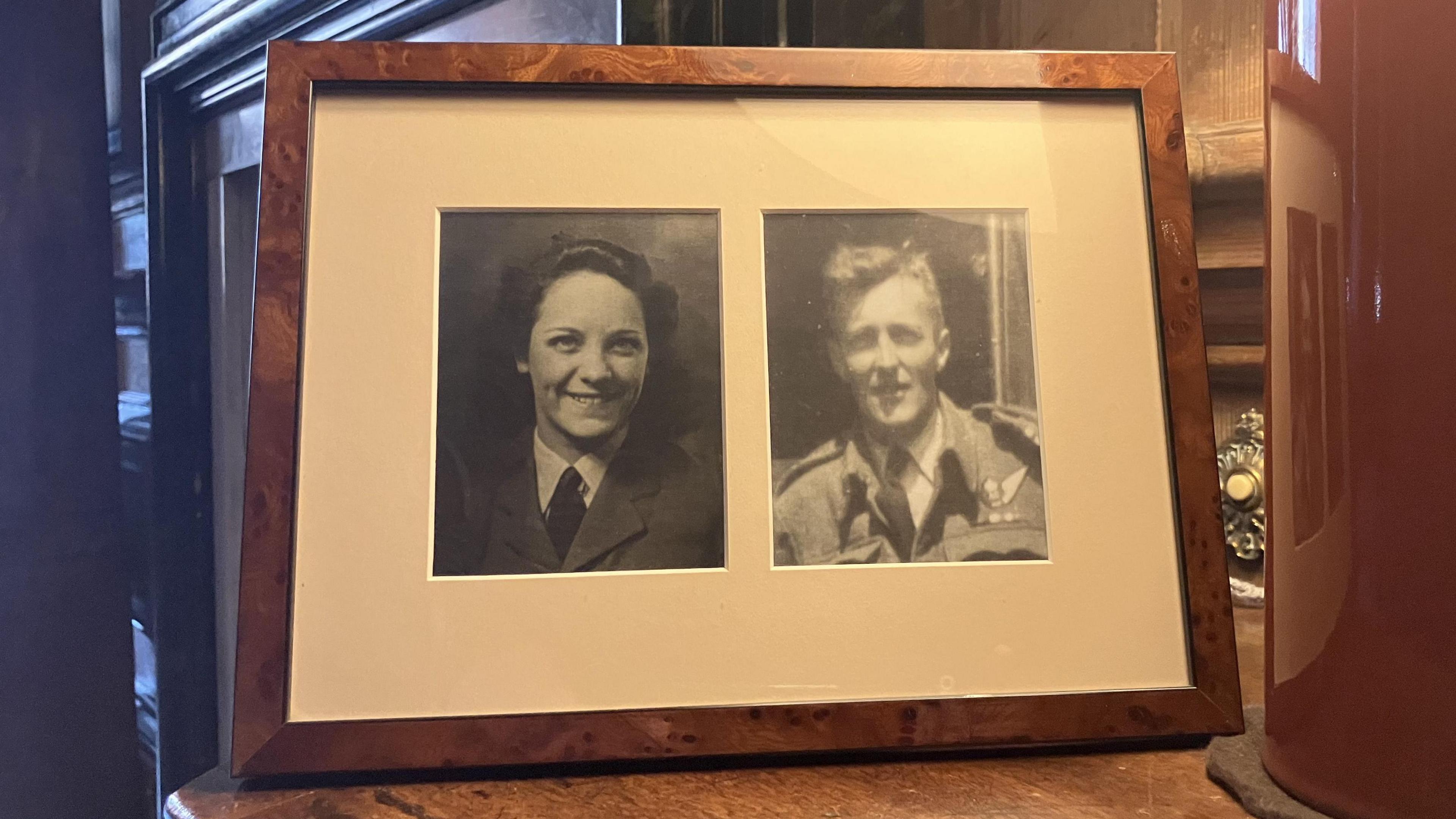
The children of a couple separated during wartime met for the first time after finding out about their romance at Beningbrough Hall
- Published
On the ground floor of the famous Bettys tearoom in York, a patch of graffiti with a very special story has survived for 80 years.
This isn't ordinary vandalism - it's a time capsule.
During World War Two, airmen stationed at nearby RAF bases frequented Bettys when it had an underground drinking den, and left messages on the mirror behind the bar.
Today it is part of the cafe on St Helen's Square, which only opened two years before the outbreak of war in 1937.
The Swiss owner, Frederick Belmont, found himself having to adapt to wartime restrictions, and rationing limited the number of continental treats he could serve.
When a famous tea room was a rowdy wartime bar
"Frederick was inventive as a chef, so turned to feeding people with whatever rations were available," says Bettys archivist Alex Hutchinson.
"The menu would say 'two courses' and would be made up of whatever they could find."
The bar became popular with service personnel when they discovered the mystery menus.
It was even nicknamed Bomber Command because so many senior officers would drink there.
"Legend has it that the young men who were flying out on missions the following day would only be able to find out their orders if they went down to Bettys bar," says Ms Hutchinson.
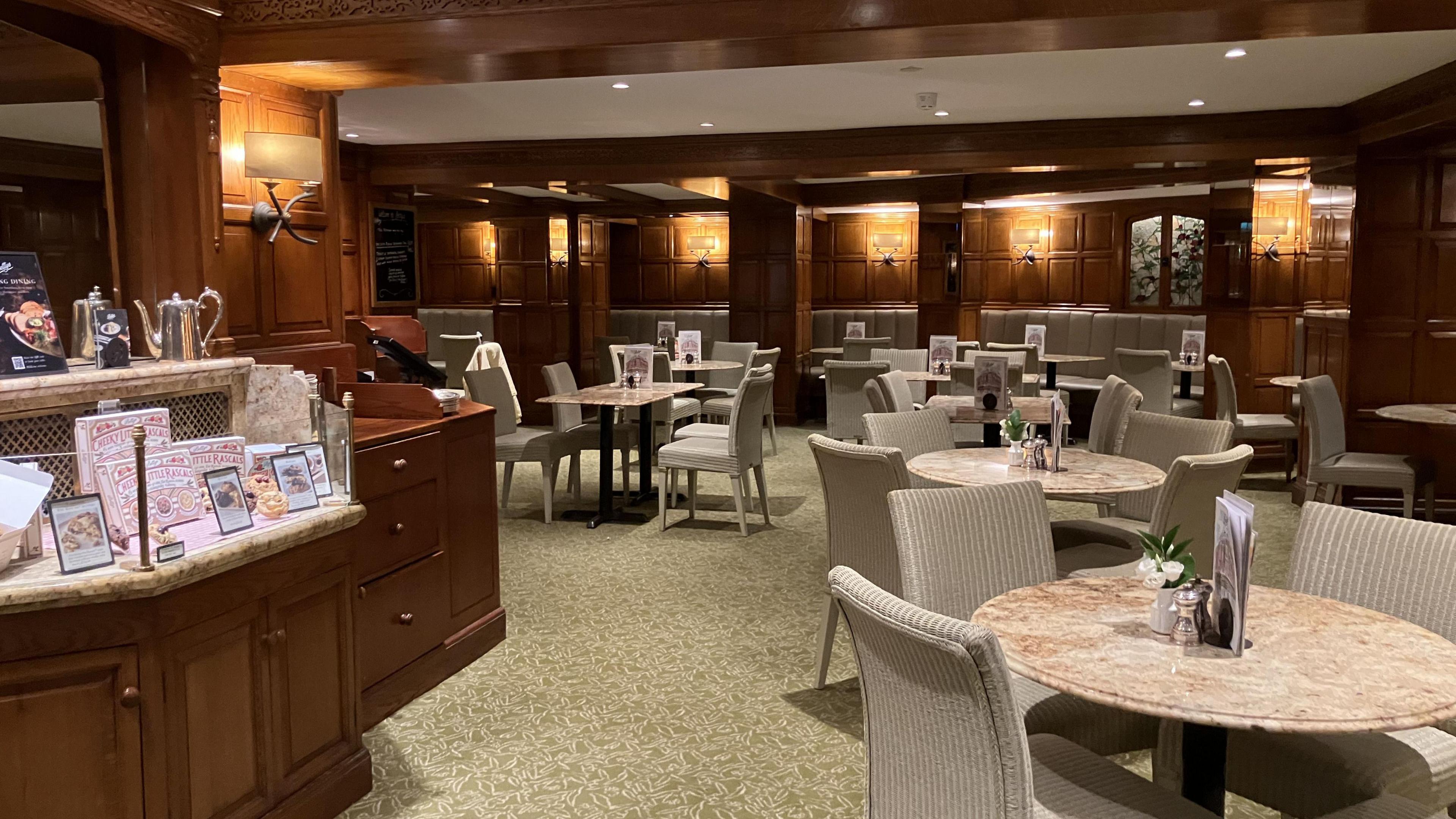
The original location of the bar is downstairs at Bettys in York
The mirror graffiti trend began when an airman borrowed a barmaid's diamond ring to carve his name. His was followed by the signatures of 600 others.
Many of them, of course, would never have returned from their missions.
"It feels very poignant to me that these young men and women were collecting autographs for people that they knew that they might not see again tomorrow," Ms Hutchinson says.
"They have left us something that means we can never forget them."
Morag Crudge has worked at Bettys for 24 years and says she has seen veterans and their families return to visit the mirror to look for their comrades' names.
"We had a group of Canadian airmen come in and I looked over and they had a hip flask.
"Each one of the airmen took a little snifter and then saluted the mirror, and the whole room fell silent."
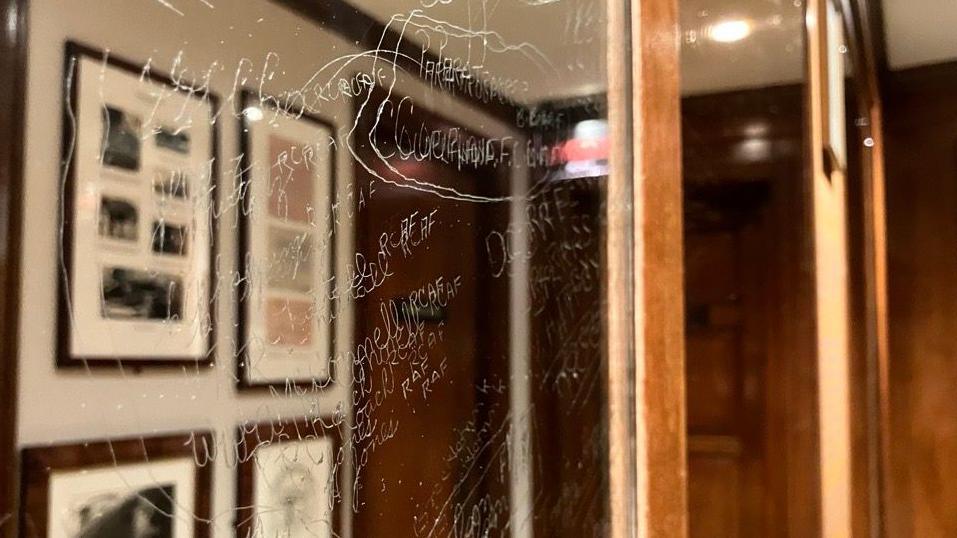
Around 600 people have signed their name on the mirror
The bar was popular with those based at RAF Linton, who were later billeted elsewhere when the airfield was bombed by the Luftwaffe.
Nearby Beningbrough Hall, now a National Trust property, was requisitioned in 1941 to house them. Many of those posted there were Canadian servicemen.
No senior officers were accommodated at the hall, so the young flight crews were free to enjoy themselves between sorties.
"There are all sorts of stories of them riding motorbikes up and down the stairs," says Matthew Constantine from the National Trust.
"They used to race down the stairs to the bar, and whoever got there first got a free pint.
"There are also talks of fire extinguisher fights, and supposedly all the original doorknobs for Beningbrough are now in Canada."
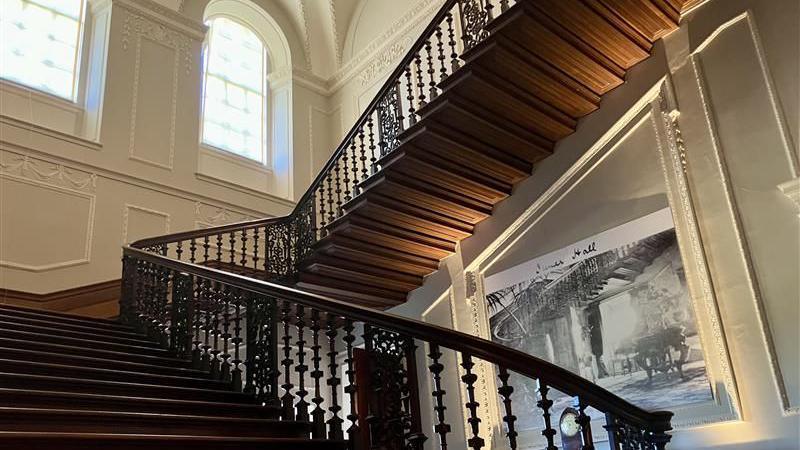
Airmen would ride their motorbikes up and down the staircases at the hall
Mr Constantine says that living conditions were "crowded and very basic" despite the grandeur of the Baroque hall, which was built in the 18th Century.
"Most of them were in the saloon, with rows and rows of metal beds, with just a thin mattress on top.
"They had no storage space, so used to hide their belongings under the floorboards."
After the house was rewired, a host of items left behind by the Canadians were discovered beneath the floorboards - including Juicy Fruit chewing gum, toothpaste and shaving kit.
"I think what it reflects is very tragically, their time here was very brief and so many of them never came back."
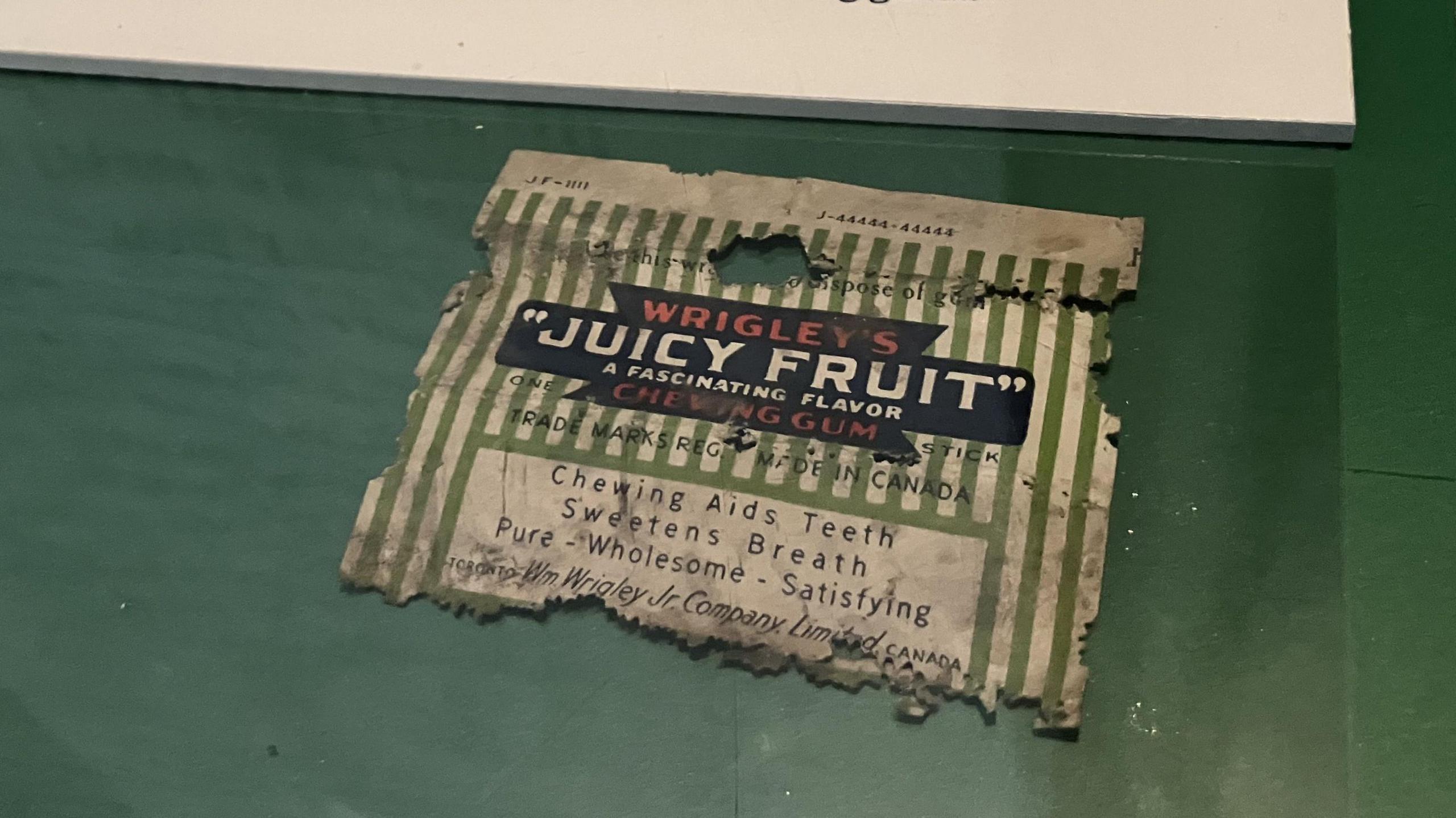
A chewing gum wrapper has been discovered left by the Canadian squadron under the floorboards
Something else left at the hall offers us a small glimpse into a wartime romance.
Carved into the wooden fireplace in the drawing room are the nicknames Gipsy and Olie and the year 1942.
It wasn't until the 1990s that the story behind the names was discovered.
"An elderly lady visited with her daughter and had a huge emotional moment when she realised it was her and her lost wartime boyfriend," says Mr Constantine.
The woman was Dorothy Preston, nicknamed Gipsy.
She'd met Canadian airman Harry "Olie" Olsen at the nearby Alice Hawthorne pub in 1941, and it was described as love at first sight.
But their relationship was cut short when Harry's plane was shot down over the Netherlands and he became a prisoner of war.
He wrote her postcards from the camp, but when war ended, he went back to Canada and they never met again. Both married and had children with other people.
"He had a great sense of humour, he got along with everyone," says Darlene Waldbauer, Harry's daughter.
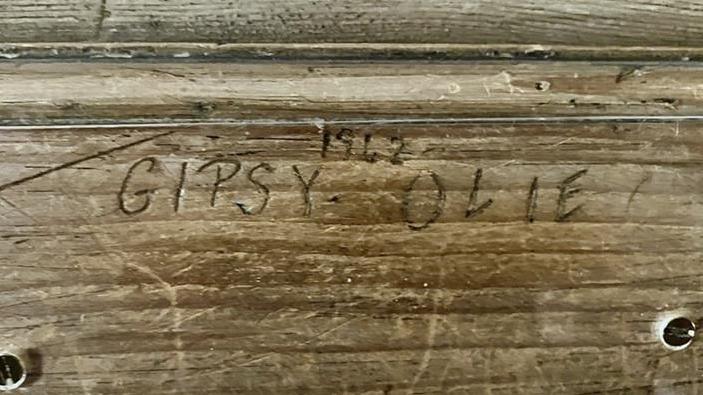
Names from a wartime romance are carved into the drawing room fireplace
It was a guide at Beningbrough Hall who sent a letter to Mrs Waldbauer's family, and Darlene decided to visit from Canada to retrace Harry's steps.
She was able to meet Dorothy's daughter, Karen, at the Alice Hawthorne.
Darlene adds: "They'd be out on these night air raids for hours and cold and dark and cramped.
"Then they come back to Beningbrough and birds were singing, there were flowers and quiet and peace.
"I think that's why it was special to them, and they were lucky to have a place like Yorkshire to return to."
Listen to highlights from North Yorkshire on BBC Sounds, catch up with the latest episode of Look North.